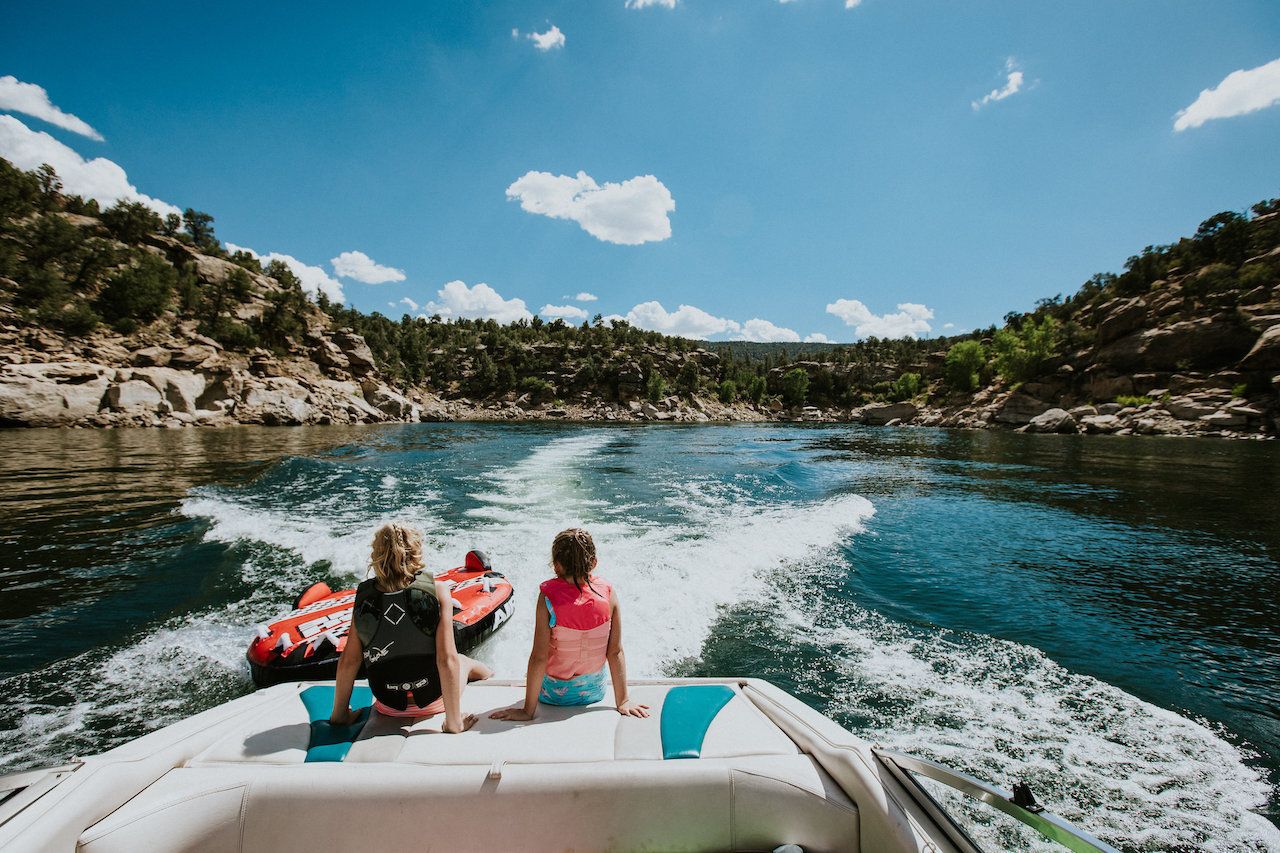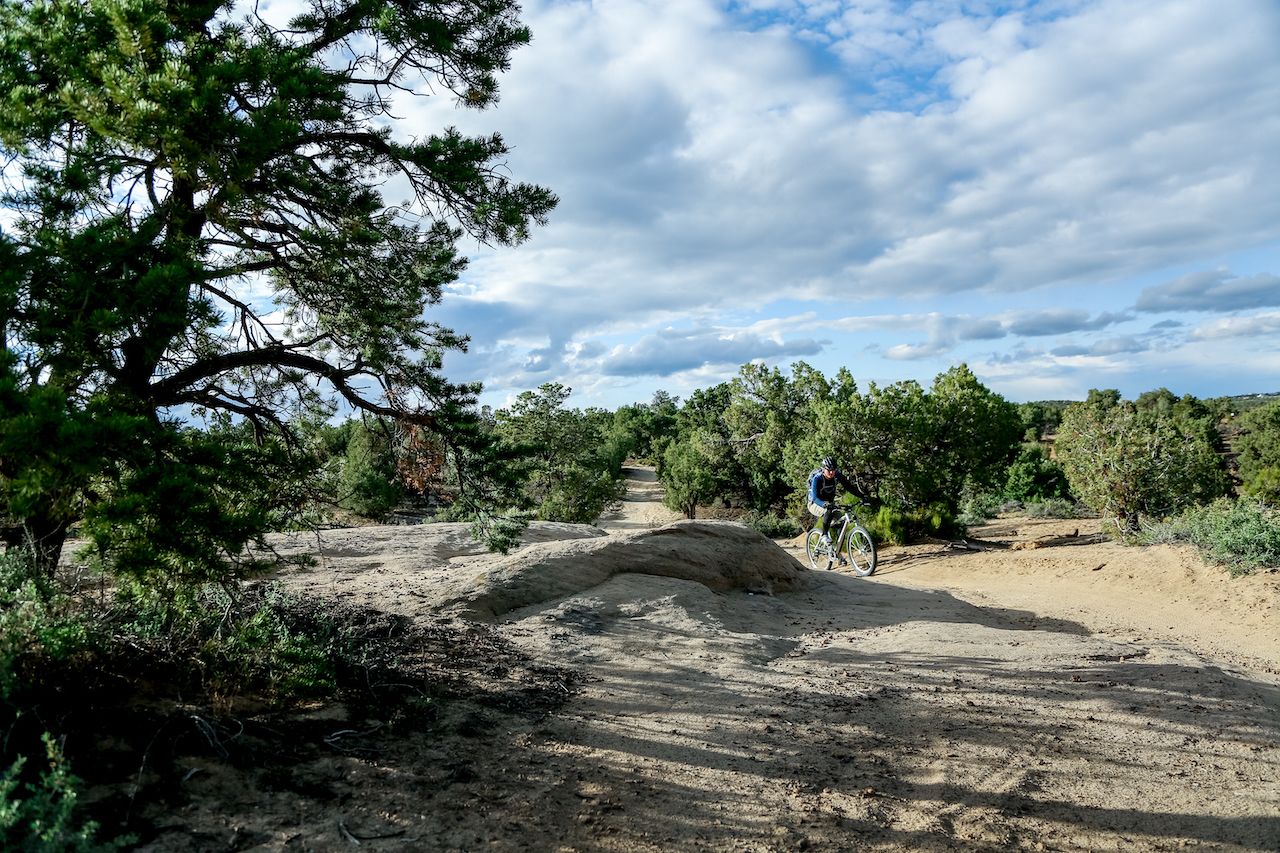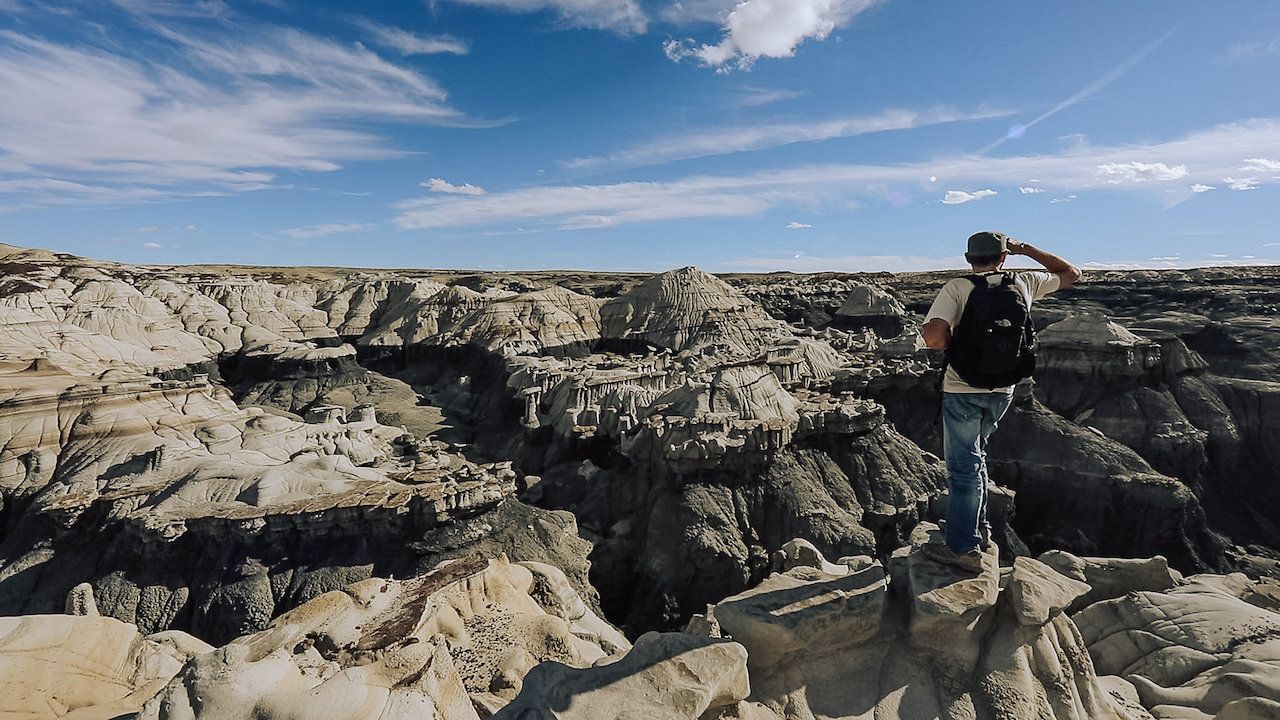For years, Farmington, New Mexico, had been having a tough run. In the early 2000s, a drive through the town’s central business district included views of shuttered storefronts and aging buildings in need of repair. 24/7 Wall St. dubbed Farmington the fastest-shrinking city in the nation as recently as 2016, and while even back then you’d pass plenty of bike-laden Subarus and RV campers, many were merely passing through on their way to Durango, Colorado, a popular mountain vacation destination an hour up Highway 550. Maybe they’d stop in Farmington to fill up their gas tank or have dinner at the local brewpub, but by the time the moon hung high over town the tourists were tucked into hotel rooms 45 miles to the north. The city was focused on natural gas and coal, not tourism.


How Outdoor Recreation Is Saving the Economy of a Former Oil Town in New Mexico
The Outdoor Recreation Industry Initiative, launched in February of 2017 and formally taken over by the city in January 2019, is changing that by capitalizing on Farmington’s other natural asset, the great outdoors, to complement — and potentially someday stand-in for — the boom-and-bust oil industry that has long shaped the city’s economy. It’s still a work in progress, but early signs point to long-term success, and maybe even a new image for the city.
An economy at the whim of oil and gas prices
Located just south of the Colorado border, Farmington is surrounded by land belonging to the Bureau of Land Management and the Navajo, Southern Ute, and Jicarilla Apache nations. It had long been accustomed to the rise and fall of oil and natural gas prices, with some stability during tough times provided by the nearby coal mine and its neighboring power plant. A major blow to the local jobs market came in June of 2018, when according to a report in the Santa Fe New Mexican, a federal judge rejected government findings that fracking left no significant environmental impact, which effectively sealed the cap on 13 leased parcels of land used for hydraulic fracturing in the four corners area. Also in 2018, another major employer in San Juan County, Public Service Company of New Mexico, announced plans to shutter the coal-fired power plant in 2022 — 1,100 jobs in the town of 45,000 stand to be lost at the power plant alone. Farmington officials decided it was time to find a way to stabilize the economy during downturns, as well as set the groundwork for long-term viability with the rising national push for cleaner energy. The government has now partnered with local businesses and agencies, including the Bureau of Land Management, San Juan County, and Four Corners Economic Development council, to turn Farmington into an outdoors destination.
“What do we retrain people to do?” Farmington Mayor Nate Duckett said at the recent Outdoor Retailer show in Denver. “These are the issues we’re facing, and the initiatives we’re trying to do. We’ve been looking around at our trails and all of our outdoor spaces as the gas has gone down. We’ve spent the last few years trying to figure out how to bring this idea forward.”
The ORII aims to reshape the economy of the entire city to focus more on outdoor recreation along with the businesses and people that drive it. Through both training and employing local residents and by luring outdoor businesses to the city, the thinking goes, the economy can stabilize and more visitors might stay awhile.
Farmington is luring outdoors-oriented entrepreneurs
Much of the brainstorming has centered around drawing outdoors-oriented business to Farmington — both for the tourists and for the long-term jobs they’d create. The land is already here, all the city needs to do is bring in people to capitalize on it. Enter Four Corners Explorers, which guides ATV tours; Paddle Shack, which rents kayaks and paddleboards at the local lake; and 505 Cycles, which equips cyclists for the hills and local road riding. “We never needed to take advantage of this before because of the oil and gas,” said Rob Mayes, Farmington city manager. “It’s been inspiring to see the reactions from the community as we’ve brought this to them.”
Businesses targeting outdoor recreationists have a strong reason to consider Farmington. The city has 58 parks, more than one for every 1,000 residents, along with trail systems of varied difficulty extending from city streets into the wilderness beyond. Increased development of walking and biking trails along the Animas River, which passes through the core of town, draws a different crowd — those looking to get out for a short jaunt in the morning or after work, or the casual afternoon stroll. “We catered to this unintentionally before,” said Shaña Reeves, director of the Farmington Department of Parks, Recreation, and Cultural Affairs. “Now we’ve realized that this is the most legitimate opportunity we’ve had (for economic growth) in a long time.”
Their initiative is aided by the fact that it is far more affordable to start a business in Farmington than in many small-city outdoor hubs like Boulder, Colorado, or Bend, Oregon, where the scene is far more established and thus more likely to show up in Google searches targeting outdoors vacation spots. The revamping of the city’s economic base is still a work in progress, but Farmington hopes to stand as an example for other small cities looking to the future. The city plans to invest the influx of tax dollars back into the community, to at least pick up where oil and gas left off and, if all goes to plan, to take the industry up a notch.
A more diverse range of offerings than most of the Southwest
Unlike many Southwestern cities, Farmington has on-water activities that rival the lakes of the midwest. Navajo Lake, a 15,000-acre lake stretching from just east of Farmington north into Colorado, offers a state park and its Navajo Lake Marina is one of the few places in the Southwest outside of Lake Powell where visitors can rent a houseboat for overnight excursions in addition to participating in day activities like water skiing and fishing. Closer to town, Farmington Lake gives residents and visitors the chance to sunbathe on a sandy beach or dive into on-water activities like paddleboarding and swimming. “The development of Farmington Lake has been huge,” said Mayor Duckett. “It appeals to an entirely different type of traveler than a bike trail or a ski resort.”
The Animas River Whitewater Park has been another key addition, bringing a man-made wave — and the kayakers that flock to such attractions — to the popular river that flows through town. Slower spots in the water are ideal for tubing, and whitewater rafting is prominent as rafters and river outfitters have trickled down from Durango.
The impact is paying off. The Farmington Convention and Visitors Bureau’s 2017 Annual Report showed 5.1 percent growth over the previous year in arts, entertainment, and recreation, with tourism spending in San Juan County topping $288 million. “We’re going to be the next Moab, that’s the goal,” said Mayor Duckett. “It’s been a five-year or so journey but I feel as though we are just getting started.” There’s still room for growth — the housing market remains stable with only moderate growth year over year, and unemployment continues to hover around 6 percent, according to the Bureau of Labor Statistics, above the national average of 3.7 percent.
But local leaders see the progress made as a sign of even more success to come, and say what they’ve accomplished so far is largely due largely to the initiative’s inclusive nature. Residents, yearning for this economic boon, have put their trust behind Duckett and Mayes. The state’s economic development incubator, dubbed the New Mexico Partnership, has jumped on board with full support. “It’s been a collaborative effort,” said Mayor Duckett. “Everyone has gotten on board, from the residents to the business owners. Even the oil and gas industry here supports this. The energy workers, they’re among the most outdoors-centric people around. They spend all day outdoors. Of course they want to see the land taken care of and used to its full potential.”
The city is ready for hardcore outdoors travelers
Farmington is surrounded by badlands and the lower San Juan Mountains, as well as rolling desert hills stretching right from town. The landscape is ideal for mountain biking, and the city draws competing riders each year for the Road Apple Rally at Lions Park Wilderness. Finishing the race is no small feat — it’s America’s longest mountain bike race, though there is a beginners’ division for riders not up to slashing berms at high speed. This year’s event takes place on October 5.
For those not up to the race itself, biking is a year-round activity in the hills outside town with Glade Run, a system of 60 miles of trails connected to the lake, being the hub of the scene. Both Durango and nearby Cortez, Colorado have long been mountain bike destinations, and Glade Run gives riders visiting popular trail systems like Phil’s World and Horse Gulch a reason to head south. “Mountain biking is leading the charge and it’s growing like nothing I’ve ever seen,” said Dale Davis, who, along with his wife Rhonda, owns 505 Cycles on Main Street. The pair are New Mexico natives and have watched Farmington through the ups and downs of the past two decades. Davis is working with the city in the development of a mountain bike park in town, and to advocate for better road biking infrastructure on city streets — both of which are part of the initiative’s long-term plan. In the interim, you can pedal out of town onto trails from Lions Wilderness Park, Sandalwood Park, and Foothills Drive — or just pedal down to the river and you’ll find a trailhead.
Now, when a visitor stops in to Three Rivers Brewing (which recently added a distillery to its operation and has become a regional imbibing destination in its own right), you’re more likely to see cyclists in road jerseys saddled up to the bar for a post-ride pint than you are to see anxious families hurrying to get out of town. Main Street continues to evolve into a central hub for shopping, dining, and nightlife to rival Durango or Taos, with art galleries and local vendors selling hand-made wares produced by the nearby Navajo, Jicarilla Apache, and Southern Ute nations. Farmington hopes to keep it that way as growth continues. “We’re committed to maintaining the infrastructure — the roads, the sewers,” said Mayes. “We want to celebrate what we have here, and to keep it going. We don’t want to become a victim of our own success.”
The best things to do on a trip to Farmington
A hike along the Riverwalk Nature Trail on the southeast end of town is the ideal first activity up arriving in Farmington. Here you can make your way along the edge of the city and get a feel for how the area is laid out. You’re also not far from Main Street at the Brewstillery, as locals call it, and other happy hour spots including Crackers Sports Bar.
Once you’ve settled in, take your next hike to the Bisti Badlands south of town, which resembles the moon, but with wildflowers. Desert spires, dunes, and arches make up the landscape, with hiking trails carved into the gray and brown soil. Several trail options are available. Start with the Valley of Dreams Trail, a 3.7-mile loop that puts you right in the middle of the spires and other weird-looking formations that the Badlands is known for. To push yourself, get out on the 5.5-mile Bisti Badlands Trail. It’s not the distance that is challenging here, it’s how remote it is. You’re really going to channel your inner-Neil Armstrong here — there’s no cell service, no water or amenities, and likely not more than a few other hikers around. Come prepared with a backpack, water, and proper hiking attire.
The Foothills Loop just north of town epitomizes high-desert mountain biking — it’s fast. The run is nine miles over rolling dunes and hills, with some rocks and berms but nothing too tough. The trail gains just over 450 feet and offers wide-open views of the surrounding San Juan Basin. After your hike or bike ride, dip your toes into Farmington Lake on a paddleboard or kayak. Catfish abound here, so bring your fishing gear as well.
When a leisurely group activity is needed, shoot a round of disc golf at Lions Wilderness Disc Golf Course. The course is expertly laid out on terrain that feels like a miniature version of the Badlands. Baskets sit on rock outcroppings or are tucked down into canyons, sometimes requiring some light bouldering to access but not any special gear other than your disc. Twenty-seven holes holes are available, though you can easily duck out after just nine.




